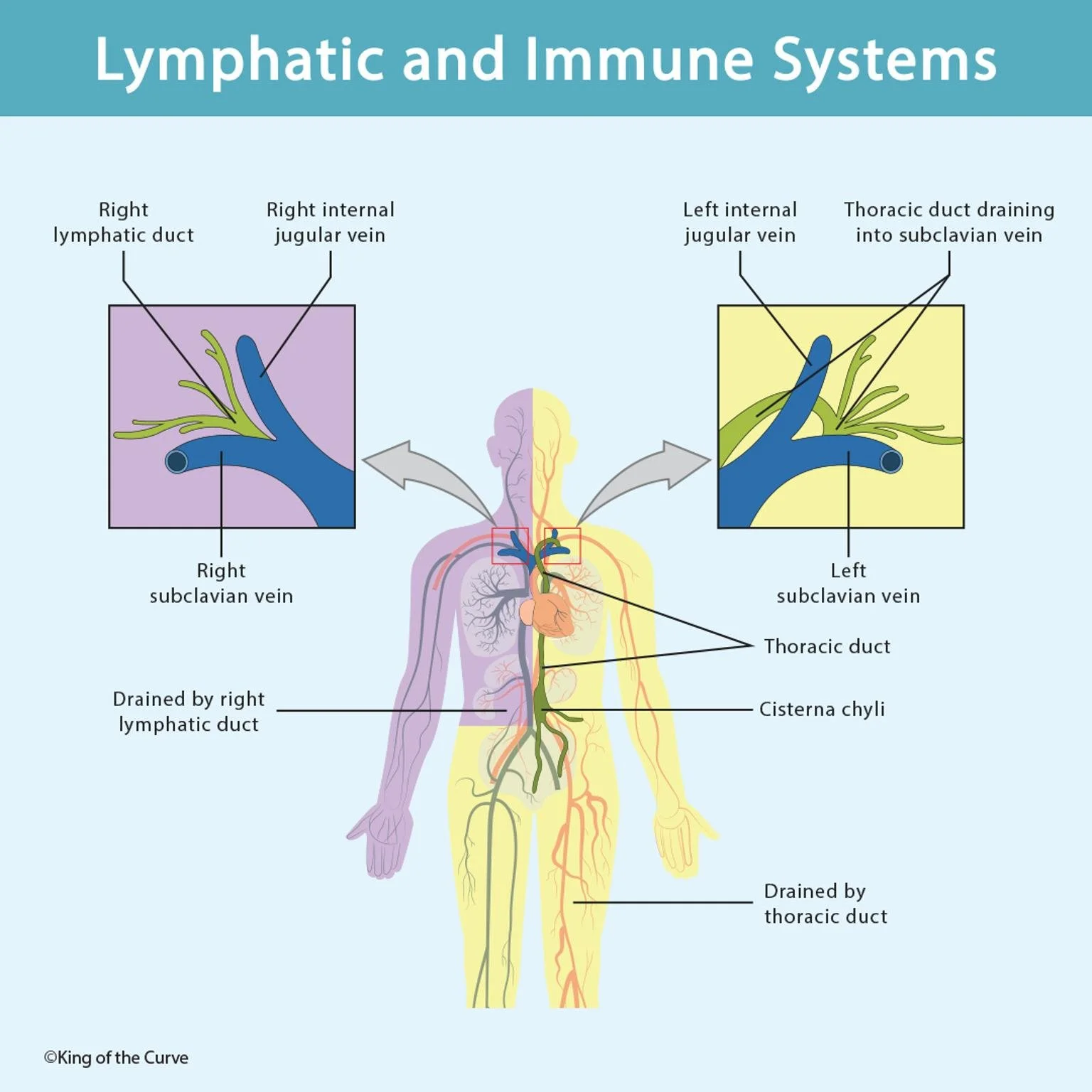🧬 Understanding the Lymphatic and Immune Systems
The lymphatic and immune systems are two closely connected networks that play vital roles in maintaining the body’s health and defense. The lymphatic system acts as the body's drainage network, collecting excess fluid from tissues and returning it to the bloodstream, while the immune system protects the body from infections and diseases. Together, they ensure that the body maintains internal balance and remains resilient against harmful invaders.
🌿 The Structure of the Lymphatic System
The lymphatic system is composed of lymphatic vessels, ducts, lymph nodes, and specialized organs such as the spleen and thymus. The right lymphatic duct drains lymph from the upper right portion of the body, emptying it into the right subclavian vein, while the thoracic duct handles the rest of the body, draining into the left subclavian vein. These ducts serve as the main channels that return filtered lymph back into the circulatory system. The cisterna chyli acts as a reservoir, collecting lymph from the lower body before channeling it into the thoracic duct.
🩸 Lymph and Immunity
Lymph fluid carries immune cells—mainly lymphocytes (T-cells and B-cells)—throughout the body, enabling them to detect and respond to foreign pathogens. As lymph travels through lymph nodes, it is filtered and examined by these immune cells. The immune system also relies on organs such as the spleen for filtering blood and the thymus for developing T-cells. This coordinated effort allows the body to detect, isolate, and eliminate harmful agents efficiently.
💪 Interplay Between the Lymphatic and Immune Systems
The lymphatic system not only helps maintain fluid balance but also provides a pathway for immune cell circulation. Without it, immune cells wouldn’t be able to reach infection sites effectively. When an infection occurs, lymph nodes may swell as immune activity increases—an indication that the immune system is responding robustly to a threat.
📊 Key Components Overview
| Component | Function |
|---|---|
| Right Lymphatic Duct | Drains lymph from the upper right side of the body into the right subclavian vein. |
| Thoracic Duct | Drains lymph from the rest of the body into the left subclavian vein. |
| Cisterna Chyli | Collects lymph from the lower body and channels it into the thoracic duct. |
| Lymph Nodes | Filter lymph fluid and house immune cells that destroy pathogens. |
| Spleen | Filters blood and supports immune response by storing white blood cells. |
🧠 Why It Matters
Understanding how the lymphatic and immune systems work together helps us appreciate how the body protects itself from illness and maintains balance. Disorders of these systems, such as lymphedema or autoimmune diseases, can significantly affect overall health.
📚 Call to Action
Learning about the lymphatic and immune systems is fundamental for students and professionals in healthcare, biology, and medicine. Explore more anatomy visuals and study tools at King of the Curve to strengthen your grasp of human physiology and ace your exams!
Frequently Asked Questions (FAQs)
-
Aim for 4-6 focused hours, ensuring you incorporate breaks to avoid burnout.
-
Practice mindfulness techniques, take practice exams under realistic conditions, and maintain a balanced lifestyle.
-
Set short-term goals, seek support from mentors, and reward yourself for small achievements.
-
Regular exercise improves focus, reduces stress, and enhances overall mental clarity.
-
KOTC offers personalized learning tools, gamification features, and adaptive question banks to help students stay on track without burnout.


